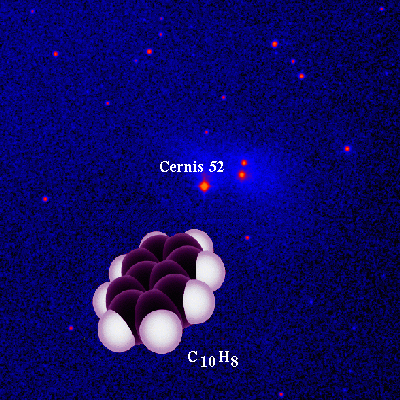SARG-TNG spectra play a key role in the discovery of naphtalene in the interstellar space
Spanish researchers have succeeded in identifying naphthalene, one of
the most complex molecules yet discovered in the interstellar
medium.
The naphthalene was discovered in a star formation region in the
constellation Perseus, in the direction of the star Cernis 52. The
spectral bands found in this constellation coincide with laboratory
measurements of the naphthalene cation. Optical spectra taken with
SARG at TNG in November 2006 provided the first evidence of the
presence of the naphthalene. Subsequently, spectra obtained with other
telescopes confirmed the results obtained with SARG.
The detection of naphtalene suggests that a large number of the key
components in prebiotic terrestrial chemistry could have been present
in the interstellar matter from which the Solar System was formed. In
fact, when subjected to ultraviolet radiation and combined with water
and ammonium (both abundant in the space between the stars),
naphthalene reacts and is capable of producing a wide variety of
aminoacids and naphthaloquinones, precursor molecules to
vitamins.
All these molecules play a fundamental role in the development of life
as we know it on Earth. In fact, naphthalene has been found in
meteorites that continue to fall to the surface of Earth, and which
fell with much greater intensity in epochs preceding the appearance
of life.
(S. Iglesias Groth et al., "Evidence for the naphtalene cation in a region of the interstellar medium with anomalous microwave emission", 2008, Astrophysical Journal, vol. 685, pages 55-58)

Figure 1. DSS2 R-band image of Cernis 52 with, superimposed, a picture of the molecule of naphtalene.

